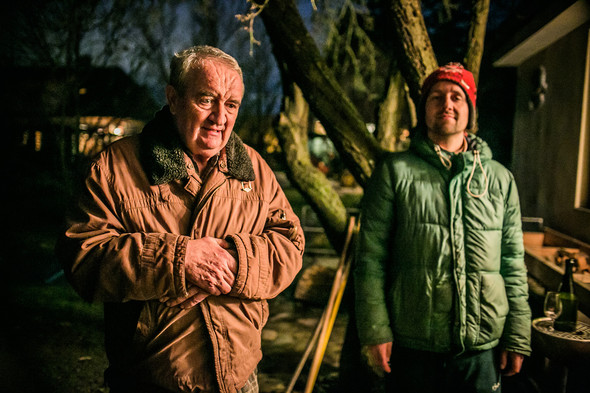Traditional method sparkling wine made from Blaufränkisch, produced in a garage in the Small Carpathians in Slovakia. No fining and no stablilisation. What you could call a real ‘vin de garage’.
Fedor Malik and Son, the father an oenologist and biotechnologist, the son a biochemist and chemist. A highly qualified partnership, along with Fedor’s brother Jakub and one, soon to be three, employees to do things like marketing, which Fedor professes to hate. The family purchased a historic winery with large cellars in Modra in the Malokarpatska region of Slovakia last year where they currently do most of their work, but next year will relocate to the main square of the town with its historical cellars, some up to 400 years old. They plan to move the production and the tasting room here.
Working with traditional methods and doing everything by hand, even the bottling, sustainable practices and plenty of work in the vineyard ensure the quality of their wines. They use modern technology, but place a great emphasis on the natural history and authenticity of their wines. The vines are on average 25 years old.
They produce a wide range of premium sparkling and still wines, 80% of which is white, for consumers looking for wines with ‘spirit and character’. This includes the aforementioned sparkling Frankovka, as it is called in Slovakia, which has turned out to be rather fruity, rather than the Pinot Noir style they had been aiming for, and a crisp, aromatic white produced from the Hungarian variety Irsai Olivér, which has already sold out.
They also grow a number of other national and local varieties, which is typical in Slovakia, such as Hron, considered to be the best variety in Slovakia for the production of red wines. Interestingly, many new crossings in Slovakia are named after rivers, so there are also Hron, Nitra and Duna (Hungarian and Slovakian for the Danube). In the future, they would also like to produce Burgundy style wines.
Modra’s vineyards were classified into three categories 13 years ago, according to factors such as altitude, soil, slope and orientation; A being the highest, C the lowest. Fedor is very aware of how the soils of the area influence the wines and which variety grows best where, so tries hard to match varieties to the right vineyard, thus creating single vineyard wines. For example, the Veltliner prefers heavy soils, though Fedor laments they don’t have much of those, and the reds do best on the east side of Modra.
Although they produce some Silvaner, fortunately they do not make the style popular in Slovakia 30 years ago, a semi-dry to semi-sweet poor quality wine.






